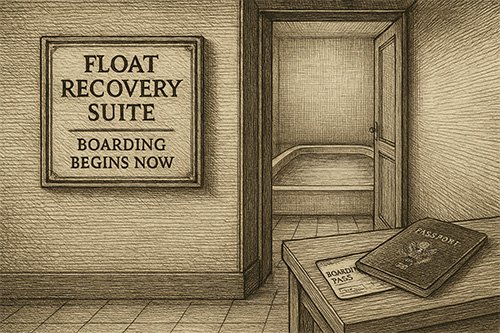From Burnout to Balance for Remote Workers & Digital Nomads
The sun hasn’t finished rising in your latest destination when Slack pings from a client several time zones away, and you’re hunched over a café table, replying on a keyboard narrower than your forearms. Twelve hours later you’re in a hostel bunk, mind racing from Zoom fatigue instead of drifting off to the lullaby of ceiling fans. Location‑flexible work is rich with freedom, yet constant connectivity, shifting clocks, and ergonomic roulette can grind even the most adventurous traveler into a pixel‑blurred shell.
Some fresh data helps to sharpen the picture more. Gallup’s 2025 “Remote Work Paradox” study found that 45% of fully remote employees felt “a lot of stress” the previous day – significantly more than their on‑site peers. For digital nomads the load is heavier still: a March 2025 survey of 946 U.S. nomads by Passport‑Photo Online showed 77% had already hit burnout, while 83% felt guilty when they tried to disconnect.
When exhaustion hits, we often reach for quick fixes – another espresso, blue‑light glasses, a two‑minute stretch. They soothe momentarily but leave the deeper circuitry of stress hormones, cardiometabolic strain, and creative block untouched. A genuine reset calls for unplugging entirely. If a multiday tech holiday feels impossible, book a float. Inside the pod’s silent, weightless dark, digital distractions vanish. With only heartbeat, breath, and magnesium‑rich water for company, body and mind begin to mend.
The physiology is well documented. A recent Laureate Institute for Brain Research study found that a single 60‑minute float slashed state anxiety across all fifty participants – a statistical power seldom seen outside drug trials. Decades of research echo the pattern: cortisol falls, perceived stress drops, and heart‑rate variability (an objective marker of parasympathetic recovery) rises. Even brief sessions shift the body into rest‑and‑digest more efficiently than a nap, according to a 2024 comparison of float‑REST and conventional napping in trained athletes.
Physical relief follows quickly. Suspended in zero gravity, the spine lengthens while neck and hip flexors unclench. Laptop nomads often say they emerge feeling taller – a subjective sensation that mirrors studies showing reduced muscle tension and lower blood pressure. Because the water matches skin temperature, the nervous system stops juggling thermal signals, freeing extra bandwidth for repair.
Creativity rebounds as well. In one trial, jazz students delivered more inventive solos after floating, and companies from Pixar to Kaiser have sent teams to float before brainstorming sessions. Freelance writers have reported outlining entire books before the exit light fades.
Neuroimaging backs these anecdotes. Researcher Dr. Justin Feinstein observes a pronounced quieting of the default‑mode network – the brain loop that replays worries about deadlines and notifications. As that chatter subsides, strategic thinking and novel connections surface, often faster than with traditional meditation.
Floating also softens jet lag. Crossing several time zones scrambles the body’s temperature rhythm. Immersion in thermoneutral water triggers the “warm‑bath effect,” encouraging sleep by nudging core temperature downward after you exit. Pair a late‑afternoon float with morning sunlight at your destination, and the clock realigns more quickly; seasoned travelers often sleep the first local night instead of staring at the ceiling.
Whether you’re tapping away in a café one town over or chasing Wi‑Fi six time zones away, floatation offers a portable refuge. By stripping out gravity, noise, and notifications, a single session releases tension built in makeshift workspaces and quiets the mental hum of perpetual connectivity. You step back to the screen refreshed, focused, and ready to savor an untethered life.

